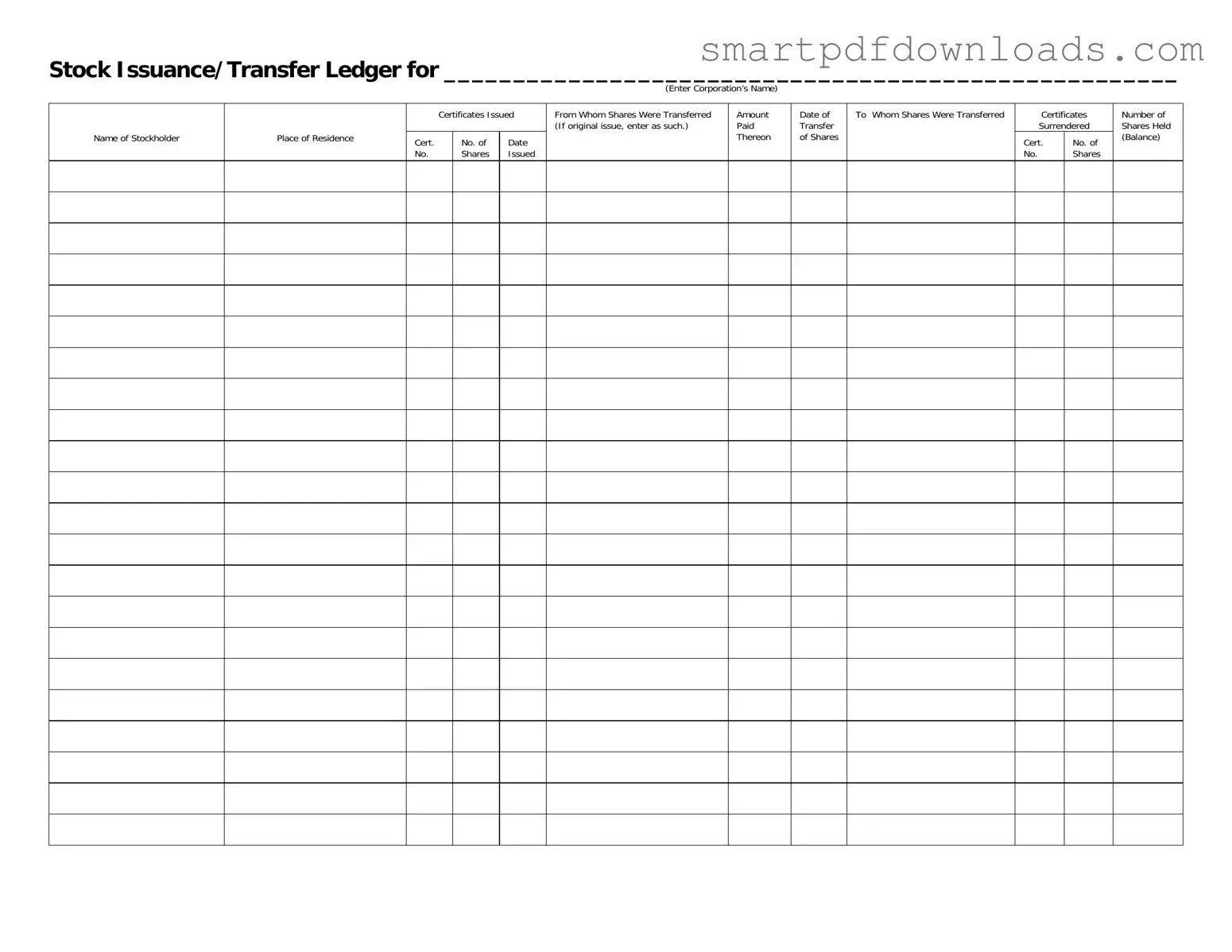Stock Transfer Ledger Form
The Stock Transfer Ledger form is a vital document used by corporations to track the issuance and transfer of stock among shareholders. It records essential details such as the stockholder's name, the number of shares issued, and the dates of transfer. Maintaining an accurate ledger is crucial for ensuring transparency and compliance in corporate governance.
Edit Stock Transfer Ledger Online

